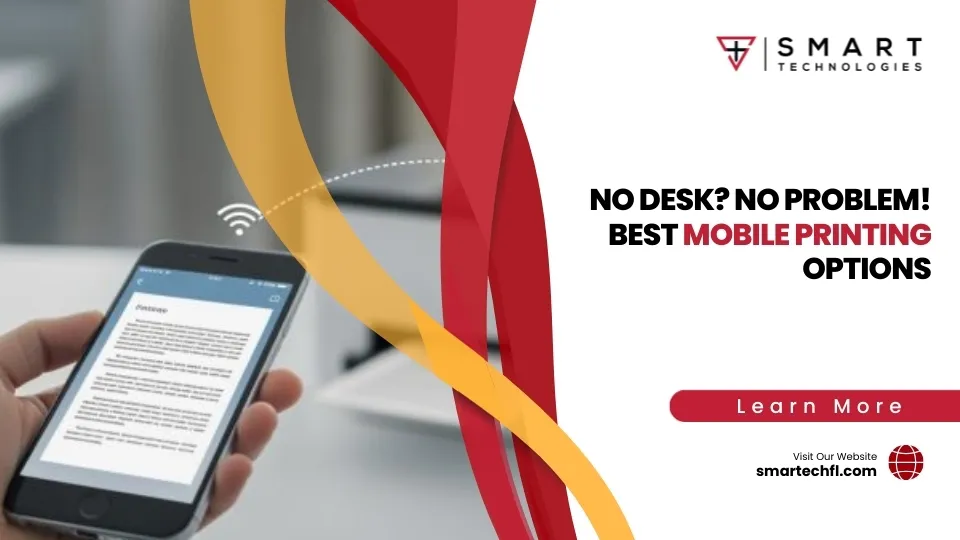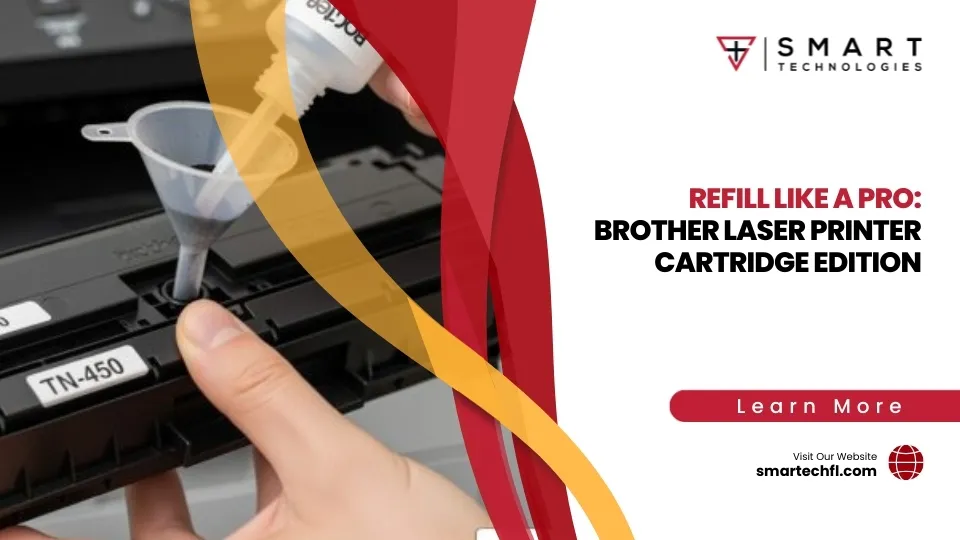Why Cloud-Based Printing is the Future of Office Efficiency
Cloud based printing is a technology that enables users to print documents from any device by sending print jobs through the internet to cloud-connected printers, eliminating the need for direct connections, print servers, and individual printer drivers.
What is cloud based printing in simple terms?
- Definition: A printing system that uses internet connections instead of cables or local networks to send documents to printers
- How it works: Print jobs are sent to a cloud service that routes them to the appropriate printer
- Key benefit: Print from anywhere to any connected printer without installing drivers
- Main types: Public cloud (multi-tenant), private cloud (single-tenant), and hybrid cloud solutions
Think back to your first experience with a printer. It likely involved clunky cables, frustrating driver installations, and being physically tethered to the device. Cloud printing has revolutionized this experience, turning a once complex process into a seamless background operation.
With 73% of organizations expecting to increase their use of cloud-based print management by 2025, this technology is rapidly becoming the standard for modern workplaces. The shift makes sense—cloud printing eliminates print servers, reduces IT helpdesk tickets, and typically delivers ROI within 6-12 months.
For retail business owners juggling multiple locations, cloud printing offers a practical solution to common challenges: employees can print from any device, managers can monitor usage across all stores, and IT teams can manage the entire print environment from a single dashboard.
As one industry expert noted, “Cloud printing delivers seamless, reliable printing across the network while significantly cutting helpdesk tickets related to printing.” This allows your team to focus on customers rather than wrestling with technology.
The evolution from traditional printing to cloud-based solutions represents more than just convenience—it’s a strategic shift that aligns with broader digital change goals while addressing practical everyday needs.
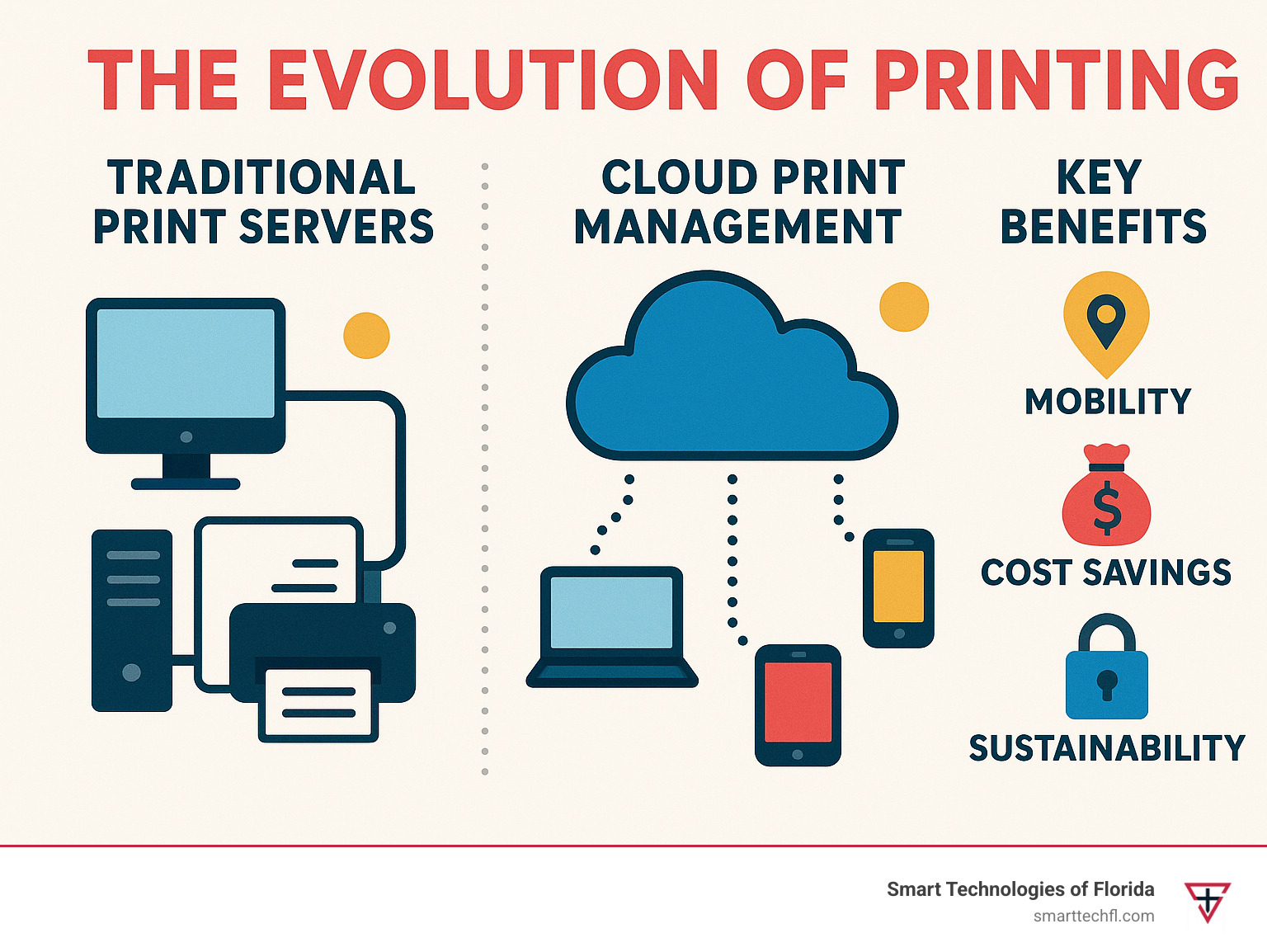
Cloud-Based Printing 101
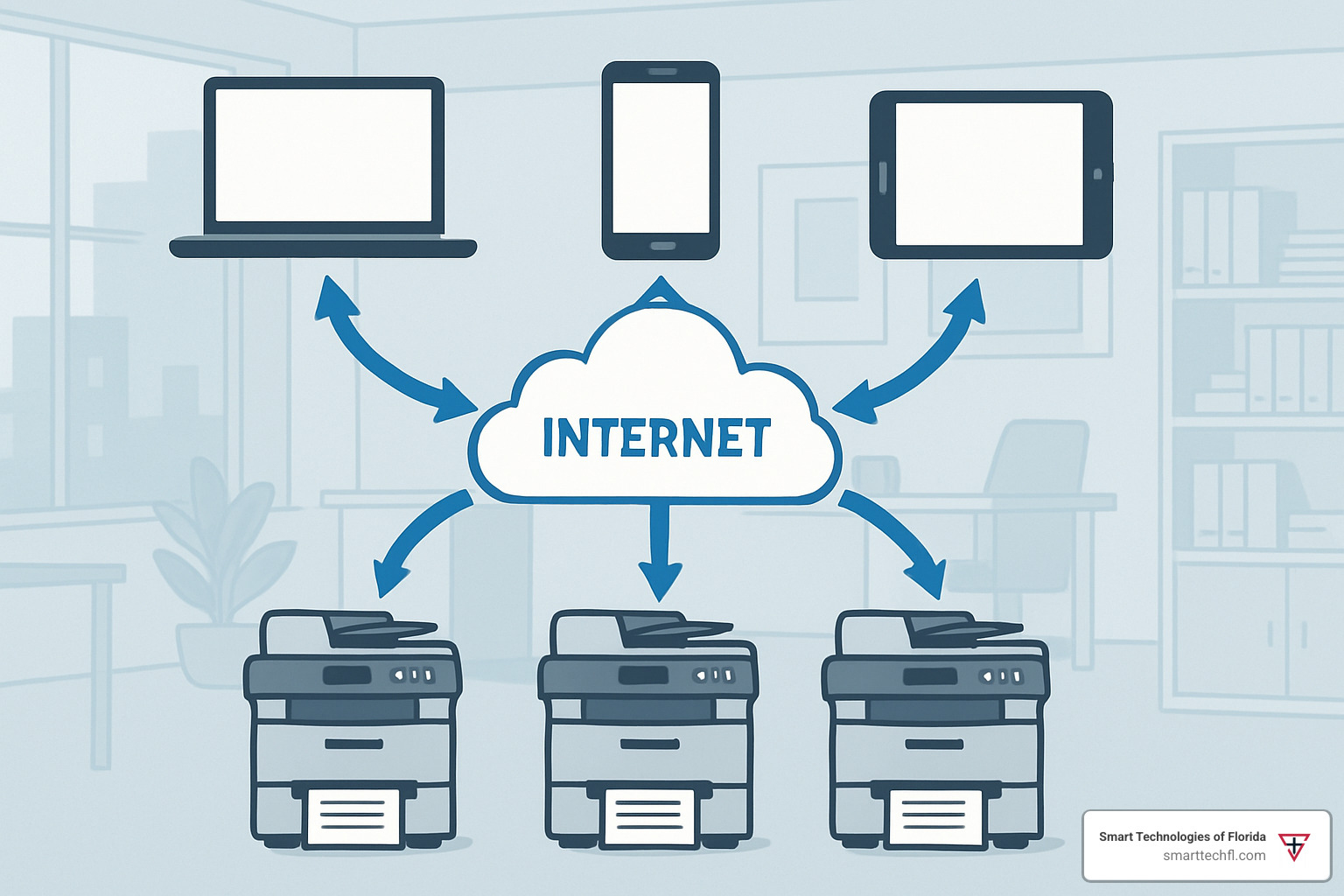
Remember the frustration of installing printer drivers, only to find they don’t work with your computer? Or walking across the office to use the “only printer that works” with your laptop? Those days are quickly becoming history, thanks to the revolution of cloud based printing.
What is Cloud-Based Printing?
At its heart, cloud based printing is like having a digital postal service for your documents. Instead of connecting directly to printers with cables or even local networks, your print jobs travel through the internet to reach their destination.
Think of it as printing without boundaries. Your document takes a journey through the cloud and emerges from any connected printer you choose—whether it’s in the next room or across the country. This approach eliminates those pesky print servers that IT teams have wrestled with for decades.
What makes this technology truly game-changing is its serverless nature. There’s no physical box to maintain. It works with any device you own—from laptops to smartphones. And perhaps best of all, you can send documents through internet routing without worrying about which printer model you’re using or installing specialized software.
“I used to spend hours helping employees connect to printers,” one of our clients told us. “Now they just click print and it works. It’s almost magical how simple it’s become.”
How Does Cloud Printing Work?
The beauty of cloud based printing lies in its straightforward workflow:
When you hit print, your document travels to a cloud service rather than directly to a printer. This service acts as the central hub, receiving your document and holding it in a secure print queue. For older printers, special software called connectors helps bridge the gap between the cloud and the physical device.
Newer cloud-ready printers can communicate directly with these services without any middleman. When you’re ready to collect your document, you simply authenticate at the printer—often with a simple tap of an ID card or entering a PIN—and your document appears.
It’s a bit like how streaming music works compared to CDs. Instead of physically transferring data through cables, everything flows through the internet—making the whole process more flexible and user-friendly.
Cloud-Based Printing vs Cloud Print Management
While they sound similar, these terms represent two different aspects of the same technology:
Cloud based printing is the actual mechanism that allows you to send documents to printers via the internet. It’s the core technology that makes remote printing possible.
Cloud print management, on the other hand, gives you control over your printing environment. It provides monitoring tools to see what’s being printed, analytics to understand printing patterns, and policy control to manage who can print what and where.
As one of our clients put it: “Cloud printing gave us freedom, but cloud print management gave us insight. Now we know exactly where our print budget is going each month.”
Together, these technologies create a complete solution—one that both simplifies the act of printing and provides the oversight needed to manage it effectively.
Public, Private, and Hybrid Cloud Models
Just like cloud computing itself, cloud based printing comes in different flavors to match your specific needs:
Public cloud solutions are like apartment buildings—multiple organizations share the same infrastructure, making them cost-effective but potentially raising questions about privacy for sensitive documents.
Private cloud options are more like having your own house—dedicated solely to your organization. This provides greater control over security and compliance requirements, though typically at a higher cost.
Hybrid cloud models offer the best of both worlds—keeping sensitive documents on private infrastructure while using public cloud services for everyday printing needs. This balanced approach provides scalability while maintaining security where it matters most.
For businesses with multiple locations or remote workers, the multi-tenant capabilities of cloud printing are particularly valuable. Employees can print to any connected device regardless of where they’re working—whether that’s at headquarters, a satellite office, or their kitchen table.
The evolution of printing has come a long way from the days of direct connections. With cloud based printing, we’re seeing technology that truly supports how modern businesses work—flexible, mobile, and unhindered by physical limitations.
Benefits of Cloud-Based Printing for Modern Workplaces
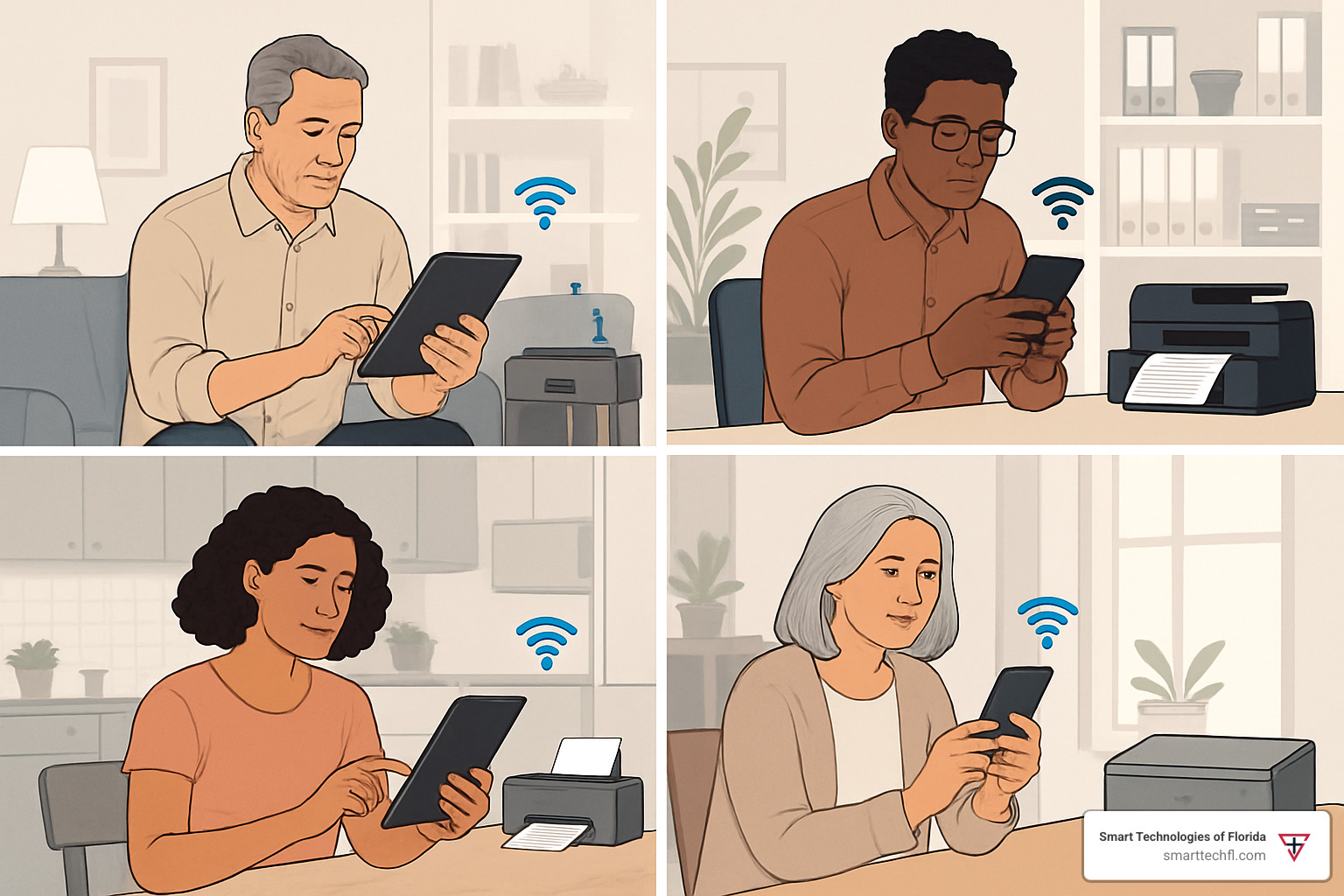
When it comes to changing your workplace, cloud based printing isn’t just another tech upgrade—it’s a game-changer that touches everything from your budget to your environmental footprint. Let’s explore how this technology is making life better for businesses of all sizes.
Business & IT Savings with Cloud-Based Printing
Remember the days of printer-related headaches? Those expensive servers humming away in closets, the constant stream of helpdesk tickets about drivers, and the mysterious “printer offline” messages that seemed to appear at the worst possible moments?
Cloud based printing sweeps those problems away, delivering tangible savings that typically pay for themselves within 6-12 months. By eliminating physical print servers, you’re not just saving on hardware costs—you’re freeing up valuable office space and reducing your energy consumption too.
The IT team benefits enormously as well. Without print servers to maintain and printer drivers to troubleshoot, they can redirect their talents toward projects that actually drive your business forward. Many of our clients at Smart Technologies of Florida report seeing print-related helpdesk tickets drop dramatically after implementing cloud solutions.
“The beauty of cloud printing isn’t just what it adds—it’s what it takes away: complexity, wasted time, and unnecessary expenses,” as one of our senior technicians often says.
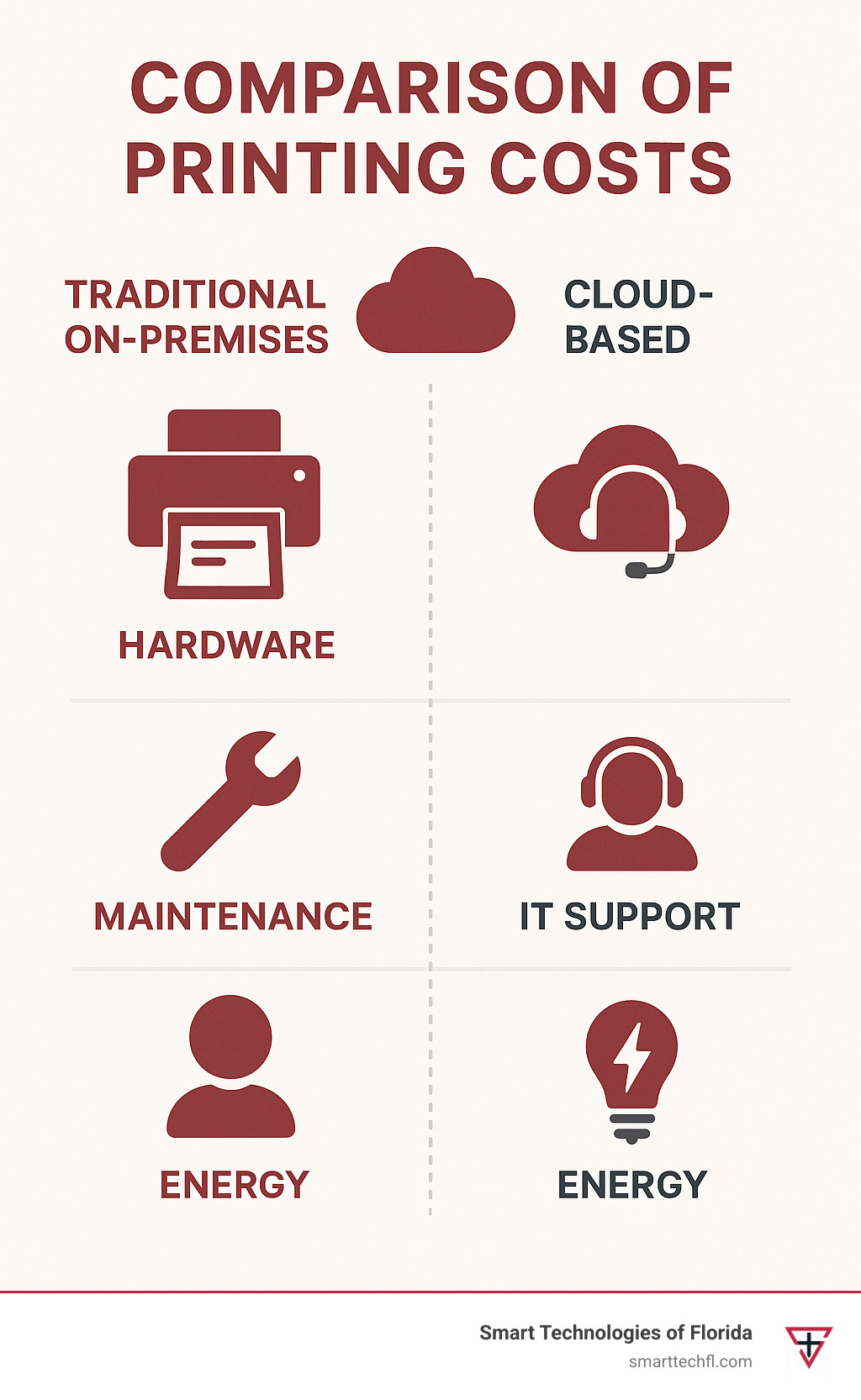
Empowering Remote & Hybrid Work
If there’s one thing the past few years have taught us, it’s that work happens everywhere—not just at the office. Cloud based printing perfectly supports this new reality by creating a consistent, hassle-free printing experience regardless of location.
Picture this: A sales rep visits your Tampa office from Miami and needs to print a proposal before a client meeting. With traditional printing, they’d be fumbling with unfamiliar printer setups or emailing documents to local staff. With cloud printing, they simply hit print from their tablet, walk to the nearest printer, and collect their documents.
The same flexibility extends to your remote workers too. They can send documents to the office printer while working from home, ready for colleagues to collect. Guests can print without compromising your network security. And everyone can print from personal devices without the IT department having to get involved.
This kind of seamless experience removes friction from everyday tasks, letting your team focus on what matters instead of wrestling with technology. For more insights on how cloud solutions can improve workplace flexibility, check out our article on Cloud Voice Services.
Sustainability and Paper Waste Reduction
Let’s talk about those stacks of abandoned printouts that pile up near office printers—the ones nobody ever claims. Cloud based printing tackles this wasteful practice through secure release printing, where documents only print when the user authenticates at the device.
The environmental benefits go even further. Smart cloud print policies can automatically apply paper-saving settings like duplex printing or draft mode. Detailed usage analytics help you identify opportunities to reduce waste. And with fewer physical servers, you’re reducing electronic waste and energy consumption too.
One client told us they reduced paper consumption by 22% in the first three months after implementing cloud based printing—that’s good for both the planet and their budget.
What makes this technology special is how it aligns environmental responsibility with business efficiency. You’re not choosing between being green and being profitable—you’re achieving both simultaneously. And in today’s business climate, where sustainability matters to customers and employees alike, that’s a powerful advantage.
The shift to cloud printing isn’t just a technical upgrade—it’s a strategic move that delivers meaningful benefits across your organization, from the IT department to remote workers to your sustainability team. At Smart Technologies of Florida, we’ve seen how these improvements translate into happier teams, lower costs, and more resilient businesses.
Security, Challenges, and Best Practices
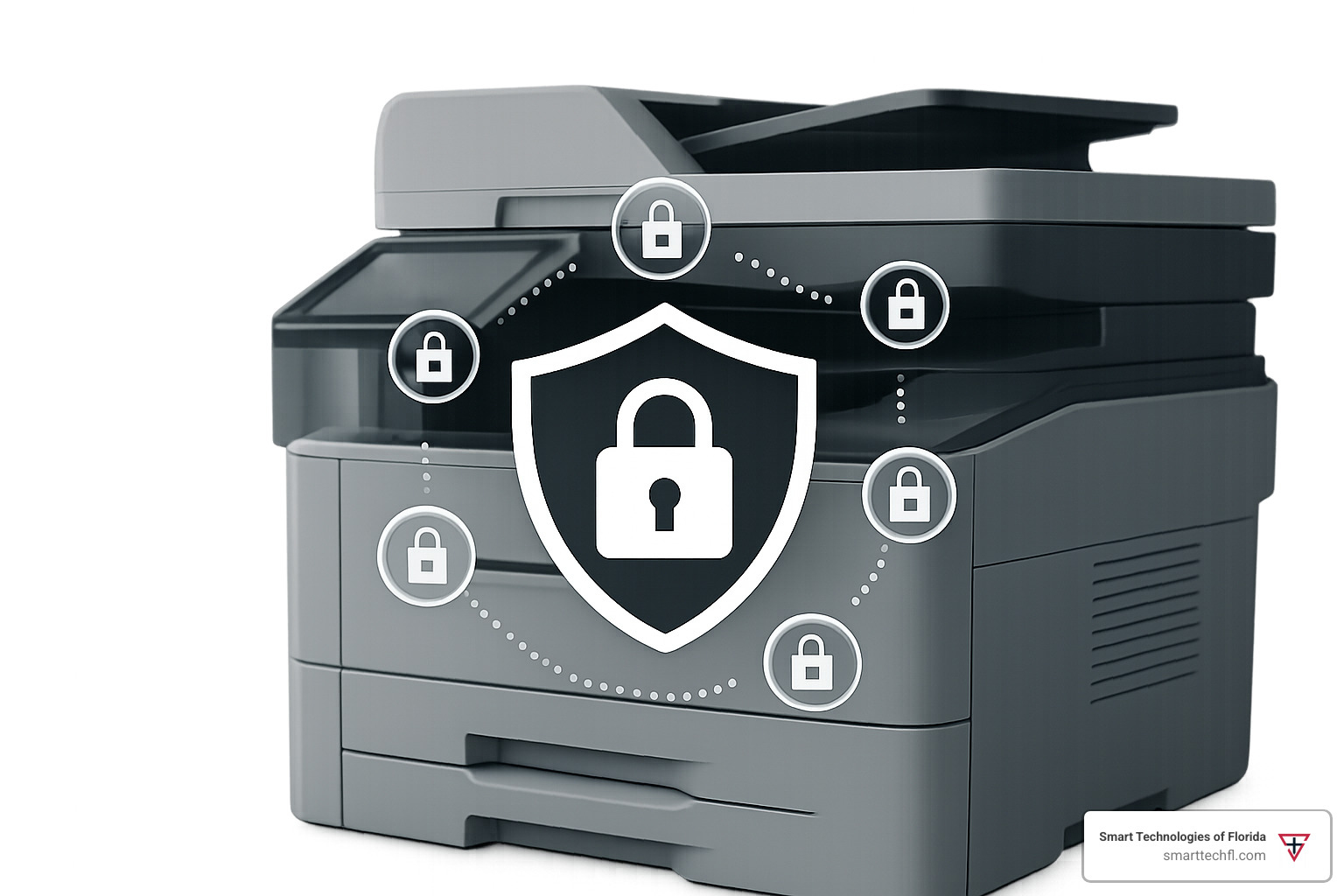
When businesses consider moving to cloud based printing, security often tops their list of concerns. After all, your documents contain sensitive information that needs protection. The good news? With the right approach, cloud printing can actually improve your security posture while delivering all those efficiency benefits we’ve discussed.
How Cloud Printing Improves Security
Let’s bust a common myth right away: cloud based printing isn’t inherently less secure than traditional printing—quite the opposite!
Modern cloud print solutions employ sophisticated security measures that many in-house systems simply can’t match. Your print jobs travel through encrypted tunnels using TLS protocols, keeping prying eyes away from your data both in transit and at rest.
“Think of it like sending your documents through a secure, private tunnel instead of across open networks,” explains one of our security specialists at Smart Technologies of Florida.
Certificate-based authentication ensures that only authorized printers receive your documents, while detailed audit trails track exactly who printed what, when, and where. This level of visibility helps you spot unusual activity before it becomes a problem.
Perhaps the most practical security improvement comes from pull printing (sometimes called secure release). With this feature, documents wait safely in the cloud until you authenticate at the printer—no more confidential reports sitting unattended in output trays where anyone could grab them!
Many cloud print platforms also integrate seamlessly with Zero Trust security frameworks, verifying every access attempt regardless of where it originates. This approach aligns perfectly with modern security best practices, especially for organizations with hybrid workforces.
Common Challenges and How to Overcome Them
While cloud based printing offers tremendous benefits, it’s important to approach implementation with eyes wide open. Here are the challenges we most commonly help clients steer:
Internet dependency is perhaps the most obvious concern—if your connection drops, what happens to printing? Smart solutions include hybrid architectures with local caching capabilities that keep you printing even during outages.
Bandwidth consumption can be significant with large print jobs, especially in offices with limited internet capacity. Compression techniques and strategic scheduling of large jobs can help manage this issue effectively.
Many organizations worry about integrating their beloved (but aging) printers into a cloud system. Cloud print connectors bridge this gap beautifully, allowing legacy hardware to communicate with modern cloud services without expensive replacements.
Vendor lock-in concerns are valid, but can be mitigated by selecting platforms with standardized APIs and clear data portability options. At Smart Technologies of Florida, we help clients evaluate these factors carefully before committing to a solution.
Perhaps the most underestimated challenge is user adoption. People develop strong habits around printing, and changing those habits requires thoughtful change management. Clear training and highlighting personal benefits (like printing from anywhere) helps smooth this transition.
Best Practices for Secure Cloud-Based Printing
After helping dozens of Florida businesses implement cloud based printing, we’ve developed some clear best practices to ensure both security and reliability:
First, establish clear recovery objectives. We typically recommend a Recovery Point Objective (RPO) of 24 hours and Recovery Time Objective (RTO) of under 90 minutes. These parameters ensure you’re prepared if something goes wrong.
Role-based access control is essential—not everyone needs to print to every printer or access all documents. By assigning permissions based on job roles, you maintain the principle of least privilege that security experts recommend.
Strong encryption protects your data both during transmission and while stored in the cloud. This is particularly important for organizations handling sensitive customer information or subject to regulations like GDPR.
Regular security audits help catch configuration drift before it creates vulnerabilities. We recommend quarterly reviews of your print security settings and access controls.
Monitoring printing activity serves both security and sustainability goals. Unusual patterns might indicate security issues, while overall usage data helps identify opportunities to reduce waste.
Keeping firmware updated is often overlooked but critically important. Modern cloud print platforms typically handle this automatically, removing a significant maintenance burden from your IT team.
“The security of your printing environment is only as strong as its weakest link,” notes our Chief Security Officer. “Cloud printing helps eliminate many of those weak links through standardization and automation.”
For organizations with specific compliance requirements, cloud based printing platforms offer robust documentation capabilities to demonstrate adherence to regulations like Internet of Things Cloud Print Management standards.
By following these practices and working with an experienced partner like Smart Technologies of Florida, you can enjoy all the benefits of cloud based printing while maintaining—or even improving—your security posture. Our Managed IT Services can help ensure your cloud printing implementation meets the highest security standards while delivering the efficiency your business needs.
Selecting & Deploying a Cloud Print Solution
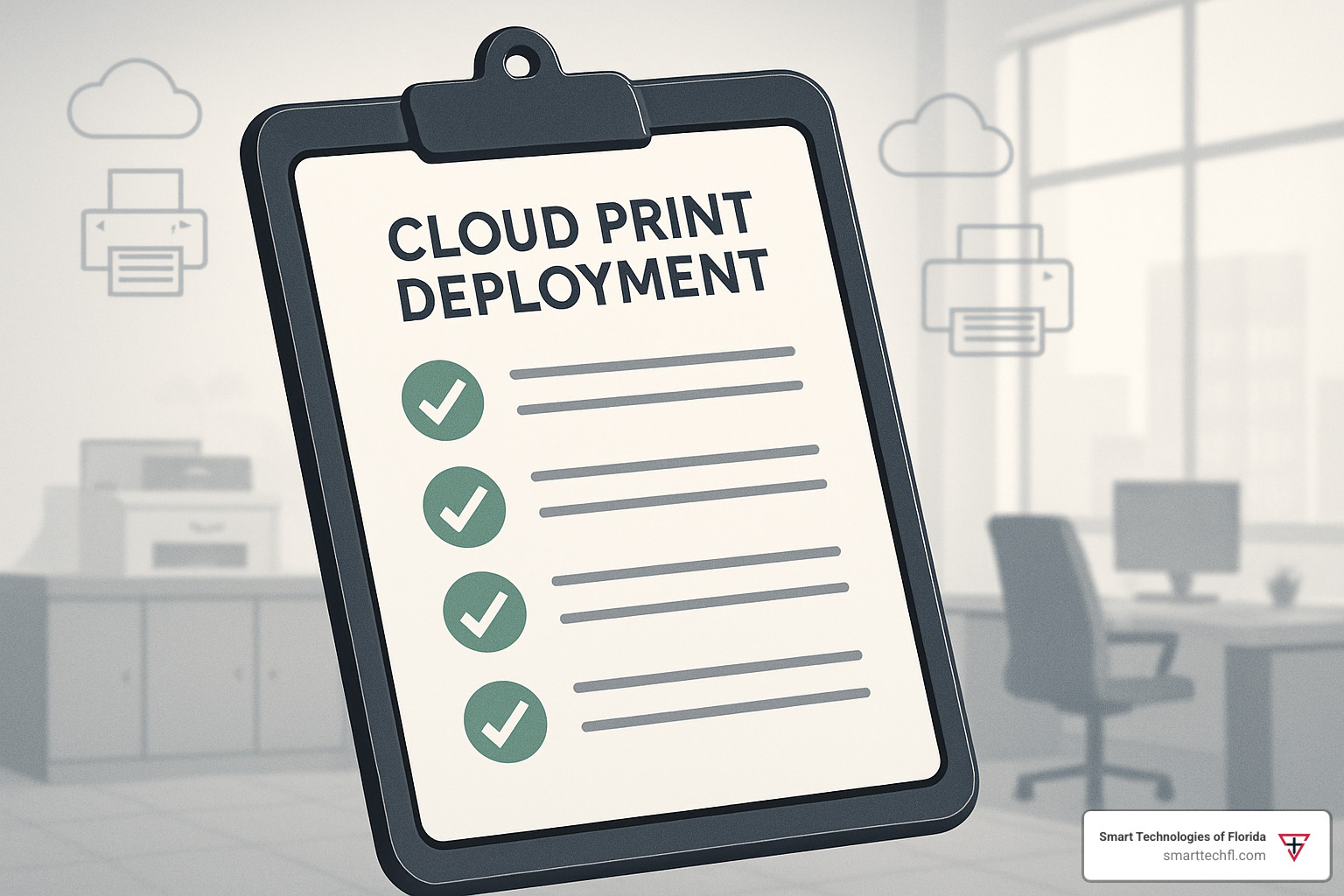
Finding the perfect cloud based printing solution feels a bit like dating – you need the right match for your specific situation, not just any pretty face that comes along. Let’s walk through how to find your ideal printing partner and make the relationship work long-term.
Key Features to Look For
When shopping for a cloud based printing solution, certain features separate the contenders from the pretenders.
Think of driverless printing as your must-have feature – it eliminates those frustrating driver installation headaches we’ve all experienced. Equally important is a universal print driver that works across your printer fleet, saving you from managing dozens of different drivers.
You’ll also want to ensure multi-platform support so your Mac users aren’t left out while Windows folks print away happily. After all, office harmony matters! And in today’s security-conscious world, secure release options using PINs, cards, or even biometrics protect sensitive documents from prying eyes.
“True cloud solutions can be set up in just 10 minutes, dramatically reducing deployment time,” notes one industry expert. That quick setup is music to the ears of busy IT teams who’d rather focus on strategic projects than printer configuration.
The best solutions also include robust analytics dashboards that show you exactly who’s printing what and where your costs are going. This visibility transforms printing from a mysterious budget black hole into a manageable expense.
Integrating Cloud Printing with Legacy Infrastructure
Let’s face reality – most of us aren’t starting from scratch. You likely have existing printers, perhaps a print server, and established workflows that need to be respected.
Cloud print connectors act as translators between your legacy printers and modern cloud services. Think of them as language interpreters that help your old and new technologies communicate effectively. These connectors mean you don’t have to replace perfectly functional printers just to gain cloud benefits.
Directory integration is another crucial element. Your cloud based printing solution should play nicely with Microsoft Entra ID (formerly Active Directory) or whatever identity system you’re using. This integration ensures the right people have access to the right printers without creating a separate user management headache.
At Smart Technologies of Florida, we’ve guided countless organizations through this transition. We’ve found that a gradual approach often works best – moving print workloads to the cloud in phases while maintaining uninterrupted service. It’s like renovating your house one room at a time while still living in it – less disruptive and more manageable.
Leading Providers & Real-World Success Stories
The cloud based printing landscape features several strong solutions with distinctive strengths. Microsoft Universal Print offers deep integration with Microsoft 365 and treats printers as Microsoft Entra ID objects, enabling a Zero Trust printing architecture. Printix, meanwhile, typically delivers ROI within 6-12 months through its multi-tenant SaaS model and pay-per-active-user pricing.
Real-world success stories demonstrate the tangible impact of cloud printing:
A multi-campus university implemented cloud based printing to support 30,000 students printing from personal devices. The result? Help desk calls dropped by 60%, and print waste fell by 40% through secure release features. That’s thousands of hours and reams of paper saved!
In healthcare, a regional provider deployed cloud printing across 12 facilities, enabling clinicians to print from mobile devices while maintaining strict HIPAA compliance. Print-related IT tickets decreased by 75%, freeing up technical staff to focus on patient-facing systems.
A multi-office real estate firm streamlined operations with cloud printing, improving document security while enabling agents to print listing materials from any location. No more rushing back to the office just to print a contract!
The Future of Cloud-Based Printing
The cloud based printing world continues to evolve in exciting ways. AI-powered optimization is beginning to analyze printing patterns and suggest efficiency improvements – like having a printing efficiency expert on staff 24/7.
Edge-mesh architecture combines cloud management with local processing for better performance and reliability, especially important in locations with spotty internet. Meanwhile, improved sustainability features are helping organizations further reduce their environmental footprint through advanced analytics and controls.
“The cloud printing market currently lacks unified industry standards, presenting an opportunity for partnerships to shape the landscape,” observes one industry analyst. This dynamic environment means the solutions will only get better and more integrated over time.
We’re particularly excited about deeper application integration that enables seamless printing directly from business applications without user intervention. Imagine your CRM automatically generating and printing customer proposals or your inventory system printing shipping labels exactly when needed – that’s the power of truly integrated cloud printing.
At Smart Technologies of Florida, we help you steer these options to find the solution that matches your specific needs while preparing you for these emerging capabilities. After all, the right printing solution should solve today’s problems while positioning you for tomorrow’s opportunities.
For more information about how cloud printing fits into a comprehensive IT strategy, check out our Managed IT Services offerings.
Frequently Asked Questions about Cloud-Based Printing
Is cloud-based printing secure?
When clients ask me about security, I often see the worry in their eyes. After all, sending your documents through the internet sounds risky at first glance. The good news? Cloud based printing can actually be more secure than traditional methods when implemented properly.
Think of modern cloud print solutions as having multiple layers of protection wrapped around your documents. Your data gets encrypted both while traveling to the printer and while waiting to be printed. The system uses certificate-based authentication, which is like having a digital ID card that verifies every device in the chain.
One feature I particularly love explaining to clients is pull printing. This means your document waits safely in the cloud until you physically walk up to a printer and authenticate yourself—no more confidential reports sitting in printer trays for anyone to see!
The detailed audit trails track who printed what, when and where, which helps with both security and accountability. Plus, cloud providers invest heavily in security expertise that would be prohibitively expensive for most organizations to maintain in-house.
Many of our clients at Smart Technologies of Florida have actually improved their overall security posture by moving to cloud printing. It’s one of those rare cases where convenience and security go hand in hand.
Can we use our existing printers?
“Do we need to replace all our printers?” This question comes up in almost every conversation about cloud based printing, and I’m always happy to deliver good news: in most cases, your existing printers will work just fine.
Modern printers (manufactured in the last 5-7 years) are often “cloud-ready” right out of the box, meaning they can connect directly to cloud print services with minimal configuration. For older models, cloud print connectors act as translators between your legacy devices and the cloud service.
Before we implement any solution, we’ll check your printer models against the Hardware Compatibility List for your chosen cloud print service. This helps avoid surprises and ensures a smooth transition.
I remember working with a local retail chain that was concerned about having to replace their fleet of 45 printers across multiple locations. After assessment, we finded that 42 of their existing printers could be integrated with cloud printing through connectors, saving them thousands in unnecessary hardware upgrades.
How much bandwidth does cloud printing consume?
The bandwidth question always makes me smile because the answer is typically “much less than you might think.” Cloud based printing is quite efficient compared to bandwidth-hungry applications like video conferencing or large file downloads.
The exact bandwidth usage depends on a few factors. A typical office document might use only 0.5-2MB when sent to a cloud print service. Larger documents with complex graphics will naturally use more, but even these are usually processed efficiently.
Many cloud print solutions use smart compression to reduce data size before transmission. Some even process print jobs locally first, then send compact instructions to the cloud rather than the entire document.
One client was concerned about their remote office with a modest internet connection. We monitored their usage after implementing cloud printing and found that even with 30 employees, print-related traffic represented less than 2% of their total bandwidth consumption.
For most organizations with standard business internet, cloud printing bandwidth is barely noticeable. If you do have specific bandwidth constraints, we can design a solution that minimizes network impact while still delivering all the benefits of modern cloud printing.
At Smart Technologies of Florida, we take the time to understand your specific environment before recommending any solution. Sometimes, a hybrid approach works best—keeping some print processing local while leveraging the cloud for management and mobile access. The beauty of today’s cloud print technology is its flexibility to adapt to your unique needs.
Conclusion
When you think about it, cloud based printing is more than just a tech upgrade—it’s a genuine game-changer for how businesses handle their printing needs. By waving goodbye to those clunky print servers, simplifying the driver headaches we’ve all experienced, and making it possible to print from virtually anywhere, cloud printing fits perfectly into the bigger picture of digital change.
Here at Smart Technologies of Florida, we’ve spent the last 23 years working alongside businesses just like yours to evolve their technology in ways that make real, practical sense. What makes us different? We put people first. The best technology solutions aren’t about the flashiest features—they’re about how those features solve actual problems for your team.
Shifting to cloud printing isn’t just a technical decision. It’s about giving your employees the tools to work more efficiently, taking unnecessary burdens off your IT team’s shoulders, supporting your sustainability goals, and creating a workplace that can bend and flex as your needs change. That’s the kind of practical value that makes a difference day to day.
The numbers tell a compelling story too. Most organizations see their investment pay off within just 6-12 months. And with nearly three-quarters of businesses planning to increase their use of cloud based printing by 2025, it’s clear this isn’t just a passing trend—it’s the new standard.
Whether you’re juggling multiple retail locations across Daytona Beach or supporting team members working from home offices throughout Florida, cloud based printing delivers the flexibility, security, and efficiency that modern businesses need to thrive.
Ready to see how cloud printing might transform your own print environment? We’d love to chat about your specific needs and help design a solution that aligns perfectly with where your business is headed. After all, technology should work for you—not the other way around.





